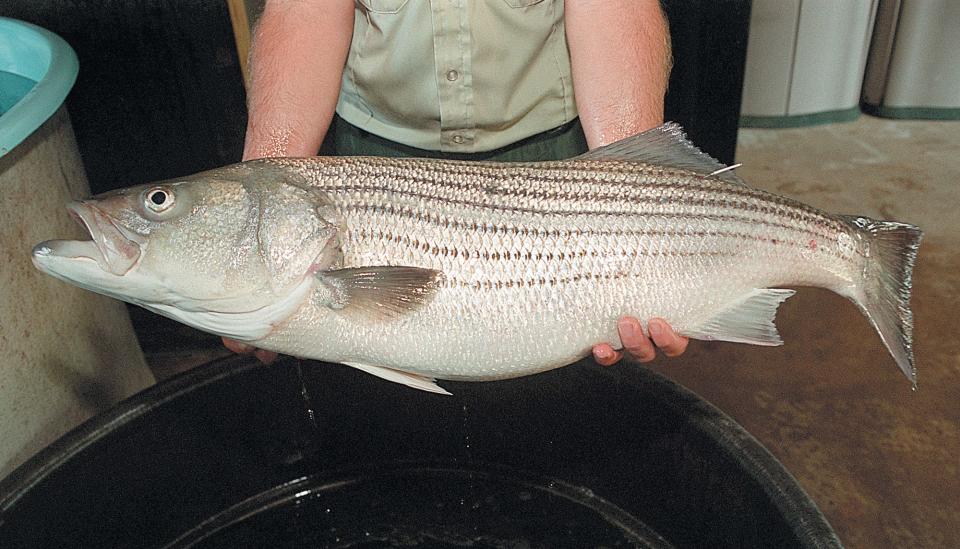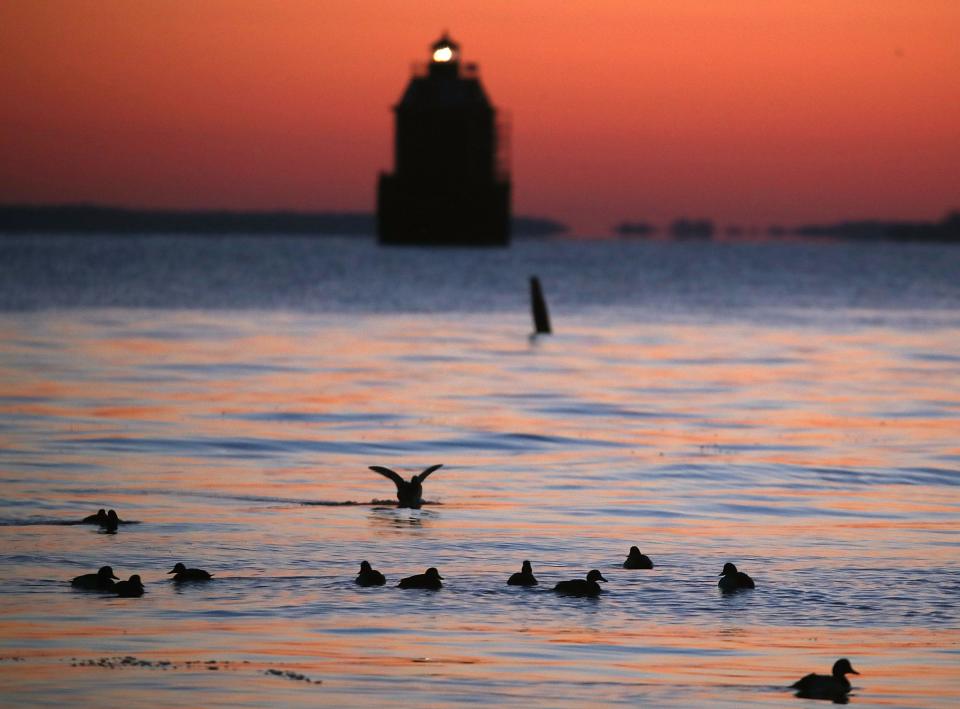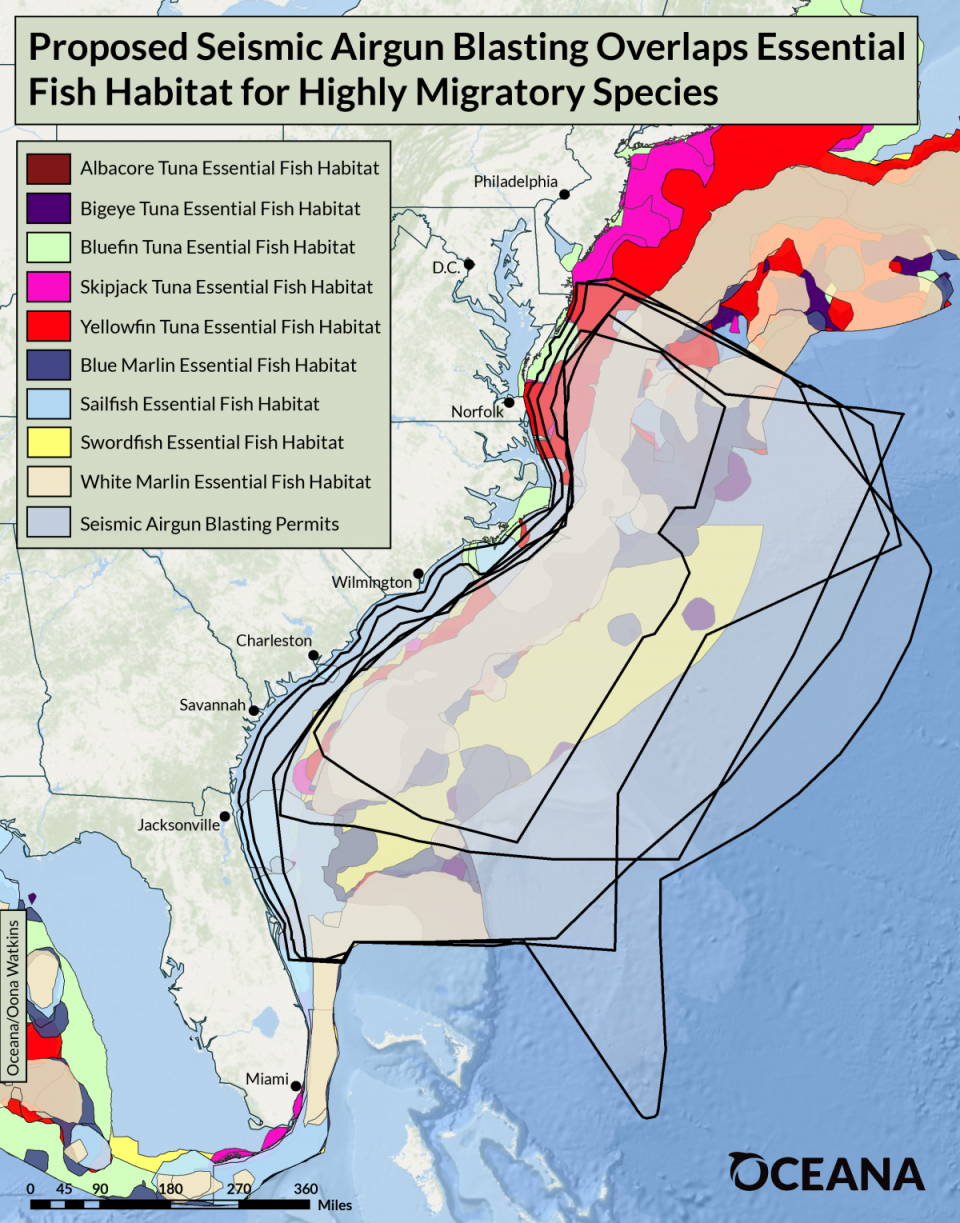Emergency rockfish regulations imperil Maryland fishing seasons: What to know
Slumping spawning numbers for the prized striped bass, or rockfish, along the Atlantic coast have led to Maryland presenting emergency regulations to bolster their population.
A decision on Wednesday by the Maryland Department of Natural Resources to introduce such measures would create "complementary actions" that will be implemented coastwide in 2024 by the Atlantic States Marine Fisheries Commission.
What new emergency regulations mean for fishing seasons

The emergency regulations propose to extend two periods already closed to targeting striped bass in the Chesapeake Bay and on the Susquehanna Flats next year. These extensions would result in the elimination of the Maryland Striped Bass Trophy season from May 1 to May 15 and the catch-and-keep fishery on the Flats from May 16 to May 31, 2024.
“Maryland waters serve as the spawning grounds for many of the striped bass that migrate up and down the East Coast, and we take our leadership role in managing the overall population seriously,” said Maryland Department of Natural Resources Secretary Josh Kurtz. “That’s why we’re putting forth new regulations to protect spawning striped bass. These management actions will complement additional fishing cuts expected to be taken by the Atlantic States Marine Fisheries Commission next year in response to the coastwide population decline in recent years.”
More on other Maryland fish species After 20 years, Maryland is still struggling to get rid of this 'Frankenfish'
These changes come after five years of below average spawning success for striped bass, also known as rockfish.
The regulations are being presented to the Maryland General Assembly’s Joint Committee on Administrative, Executive and Legislative Review for its consideration. A public hearing on the draft regulations would take place if called for by a committee member.
Chesapeake Bay is a key spawning ground for rockfish

According to the department, the Chesapeake Bay is the primary spawning and nursery area for 70% to 90% of the striped bass of the Atlantic coast. Striped bass is also Maryland’s state fish and the state’s most important commercial and recreational fish species.
A comprehensive striped bass stock assessment scheduled to be released in 2024 will determine how the species has responded to previous management actions made by Maryland and other coastal states during the last few years.
“The recent recruitment numbers of juvenile striped bass show that additional management efforts are necessary to protect the overall population,” said DNR Fishing and Boating Services Director Lynn Waller Fegley. “We believe the proposed regulations will help protect the spawning stock of striped bass in Maryland. Increasing the spawning stock will enhance the odds of successful spawning when environmental conditions are right.”
Emergency regulations can take effect for 180 days, so approved changes would affect the spring portion of the 2024 fishing season. If the state seeks to continue these measures beyond that, it would require a rule change and a more extensive public comment process.
Department officials recommended anglers pursue other fish, such as invasive species like blue catfish and northern snakehead, instead of striped bass.
OFFSHORE WIND IN PERIL?: Is offshore wind in Maryland, Delaware in peril after New Jersey troubles? What to know.
Striped bass fishery contributes billions to US GDP

In 2019, the McGraw Center for Conservation Leadership found the striped bass fishery accounted for more than 48 million pounds of landed fish by both commercial and recreational fishermen. This total fishing activity contributed a total of $7.8 billion toward the country's gross domestic product.
The study also noted commercial landings accounted for 10% of all the striped bass landings and recreational anglers took the remaining 90% of the total. Including all economic activity associated with the commercial fishery, such as harvesting, processing, wholesale and retail, commercial landings produced less than 3% of the total economic contributions.
Spending by recreational anglers accounted for more than 97% of the total economic impact connected withstriped bass fishing.
"For both recreational and commercial striped bass fisheries, this study presents several important economic impact measures: retail sales, total economic (multiplier) effect, salaries and wages, jobs and contributions to GDP. Recreational and commercial fishing can be a powerful contributor to coastal economies," the report stated.
The striped bass fishery impact in Maryland, Delaware and Virginia
In Maryland, $802.8 million was added to the gross domestic product of the state in 2016, compared to nearly$664.2 million just seven years earlier. There were 10,193 jobs supported in 2016.
More on the offshore wind and fishing As offshore wind nears reality, coastal groups say they feel 'steamrolled'
In Delaware, over 271,000 anglers in 2009 and over 287,000 anglers in 2016 fished striped bass. In each year, the average angler participated in around eight fishing trips, of which a moderate portion was striped bass trips.
In Virginia, $106.6 million was added to the gross domestic product in 2016, compared to just over $240.5 million in 2009. In 2016, there were 1,444 jobs supported.
This article originally appeared on Salisbury Daily Times: Rockfish season in peril with emergency Maryland fishing regulations

